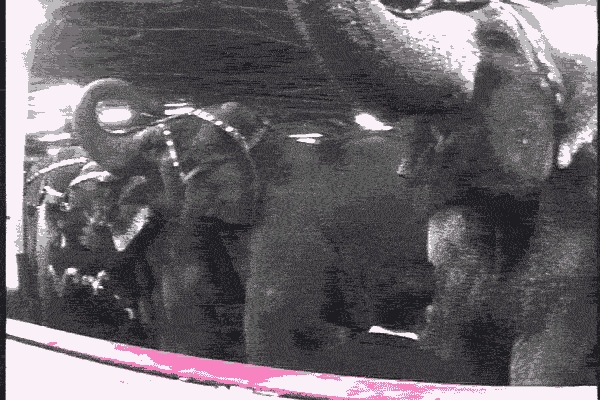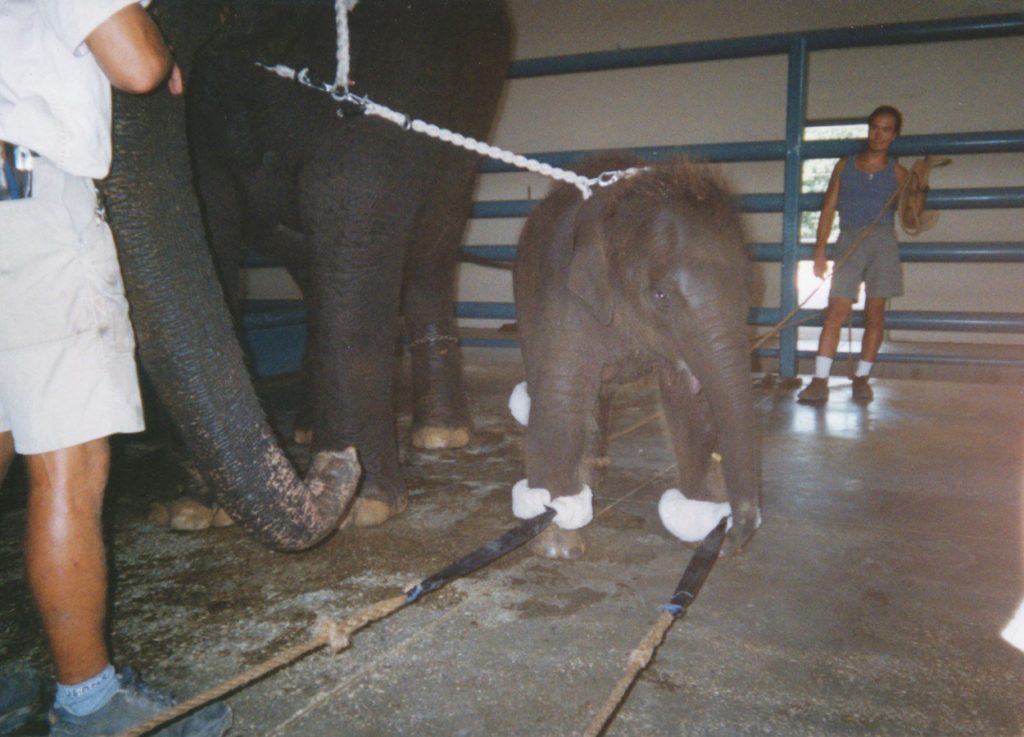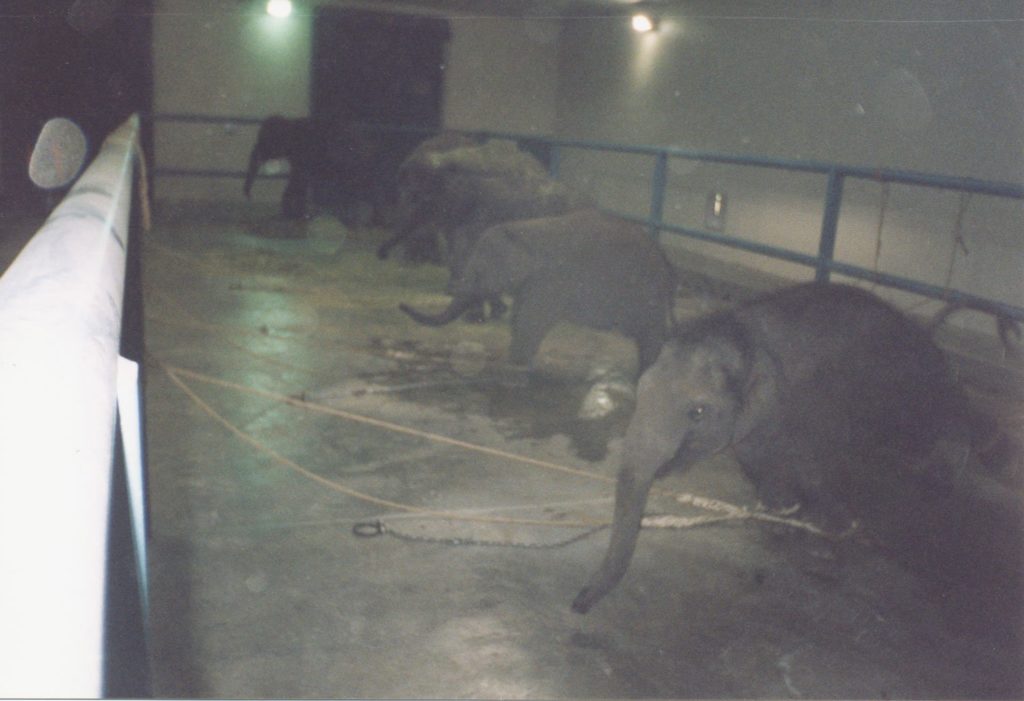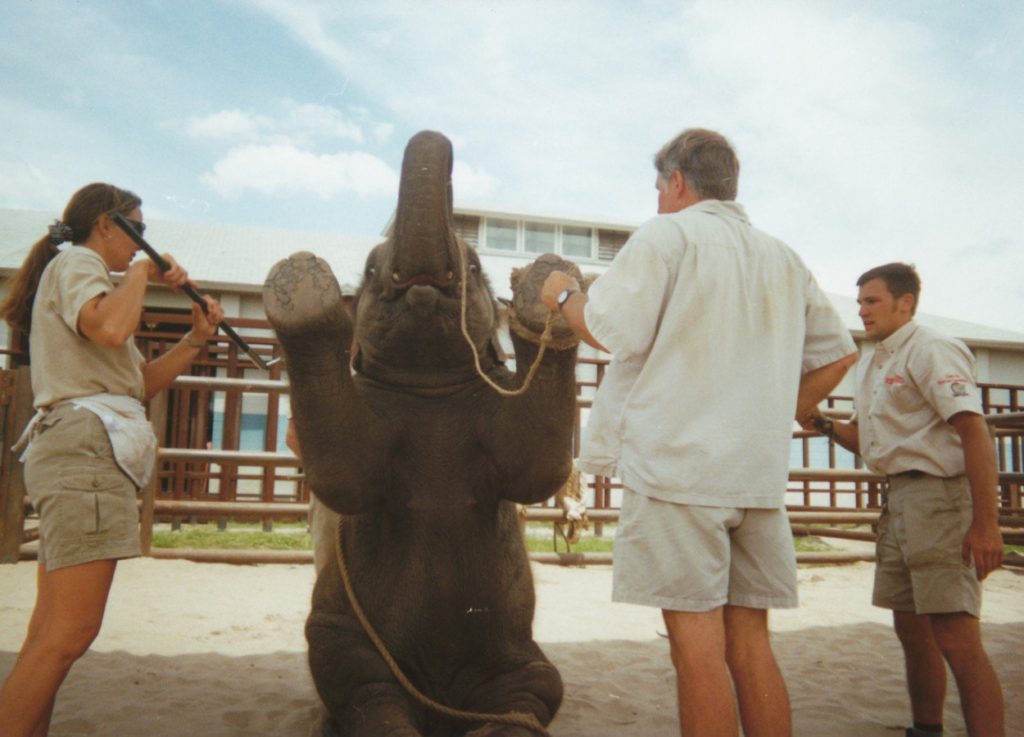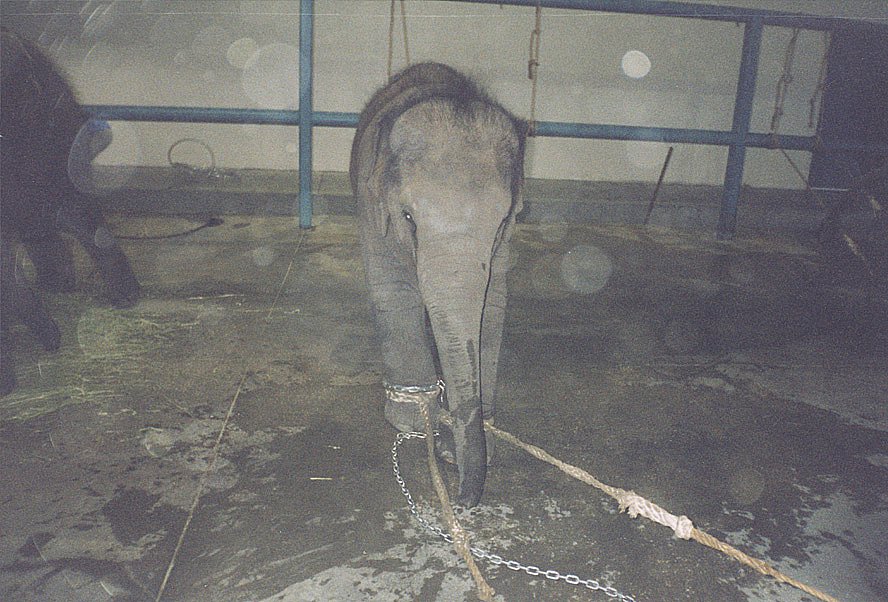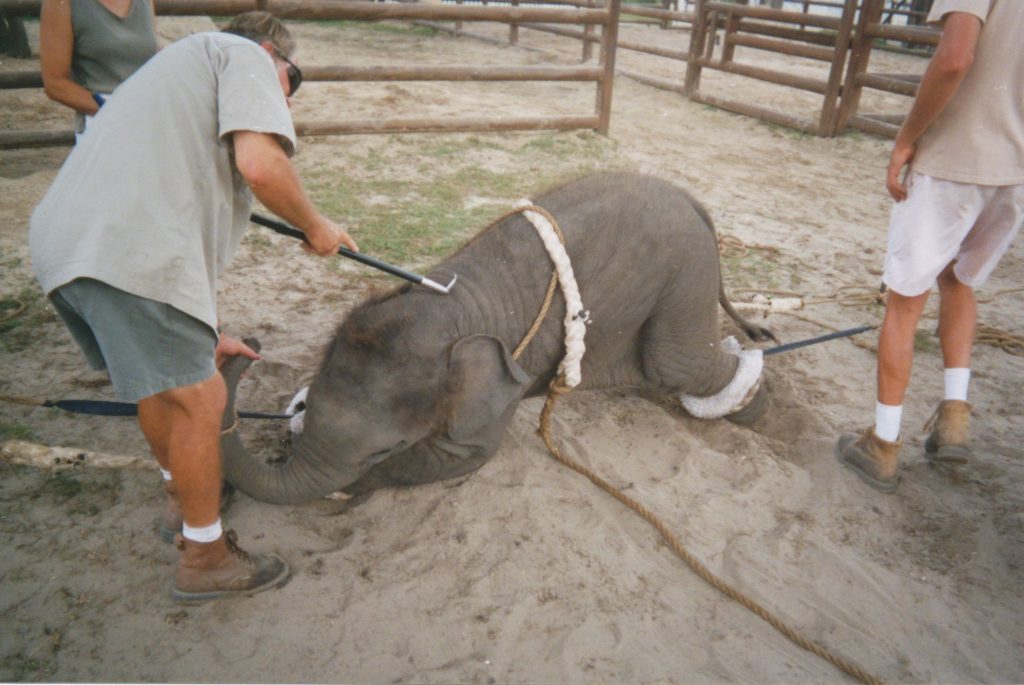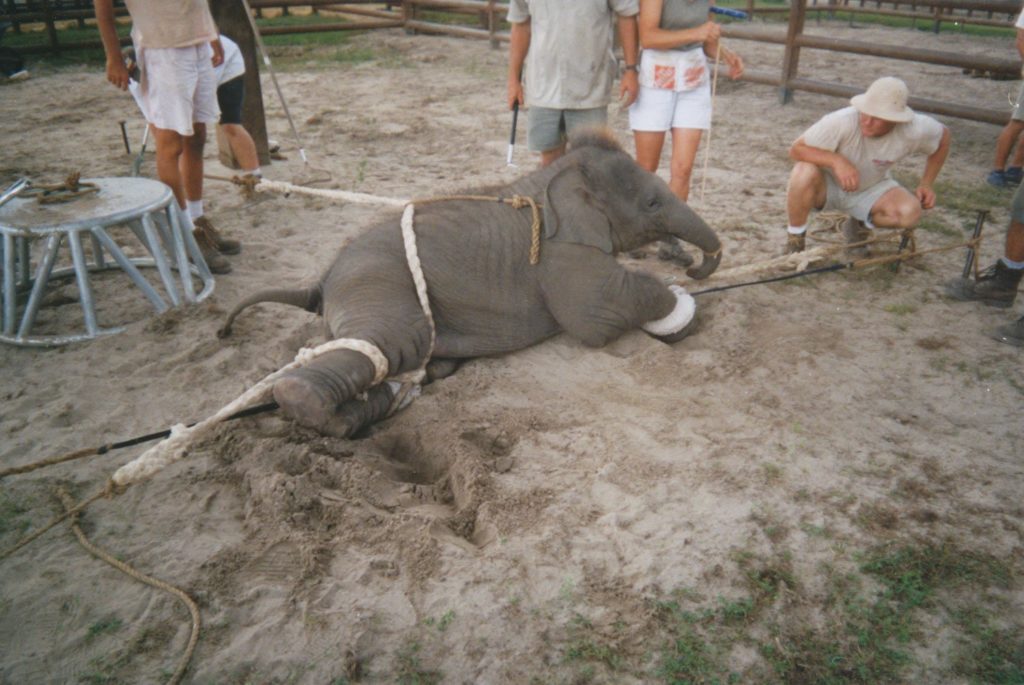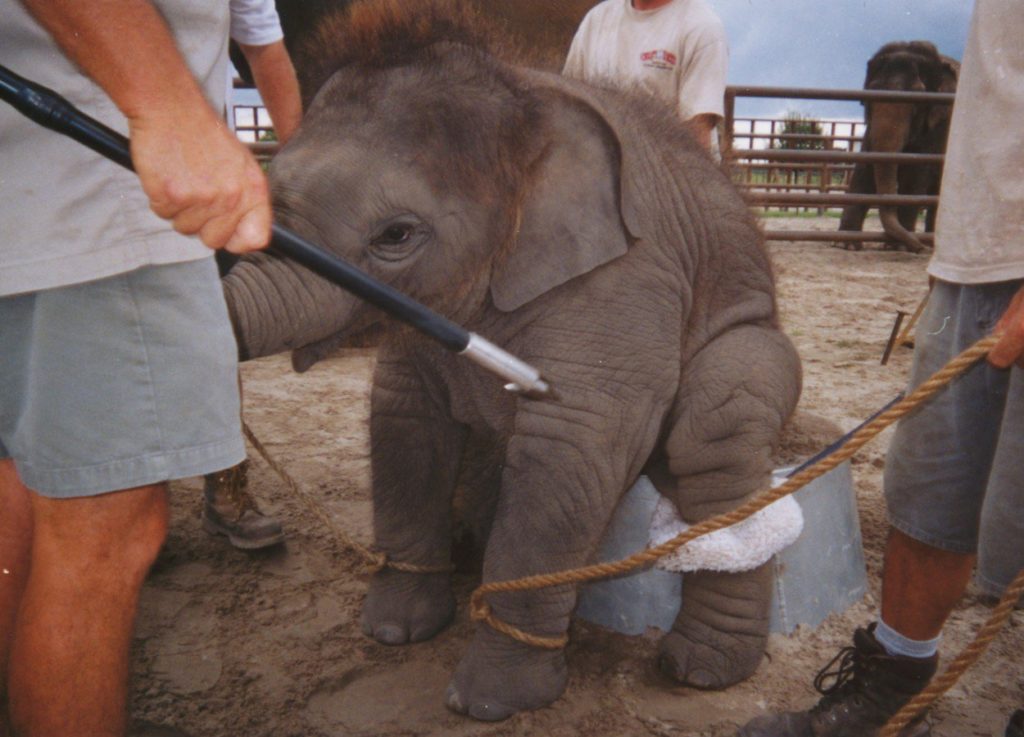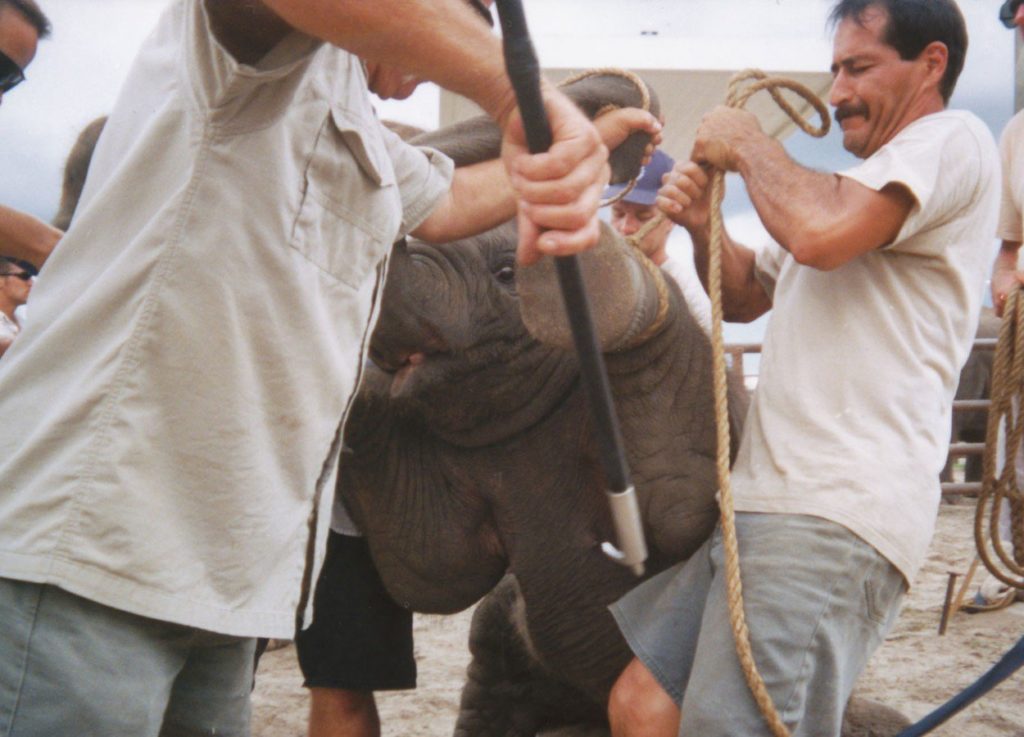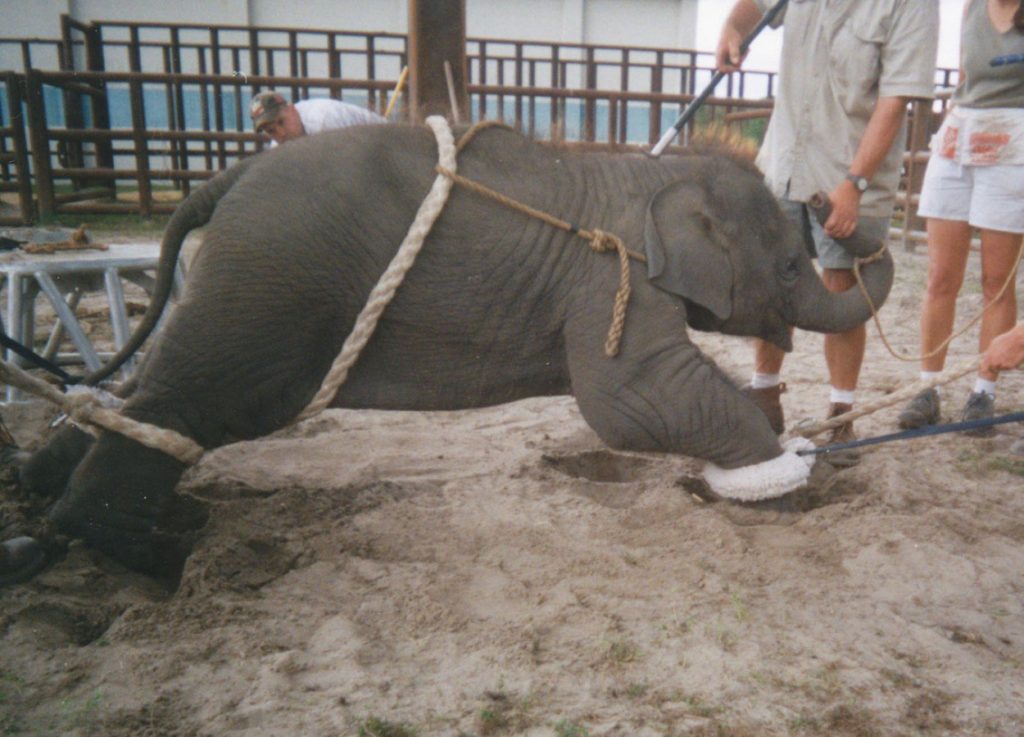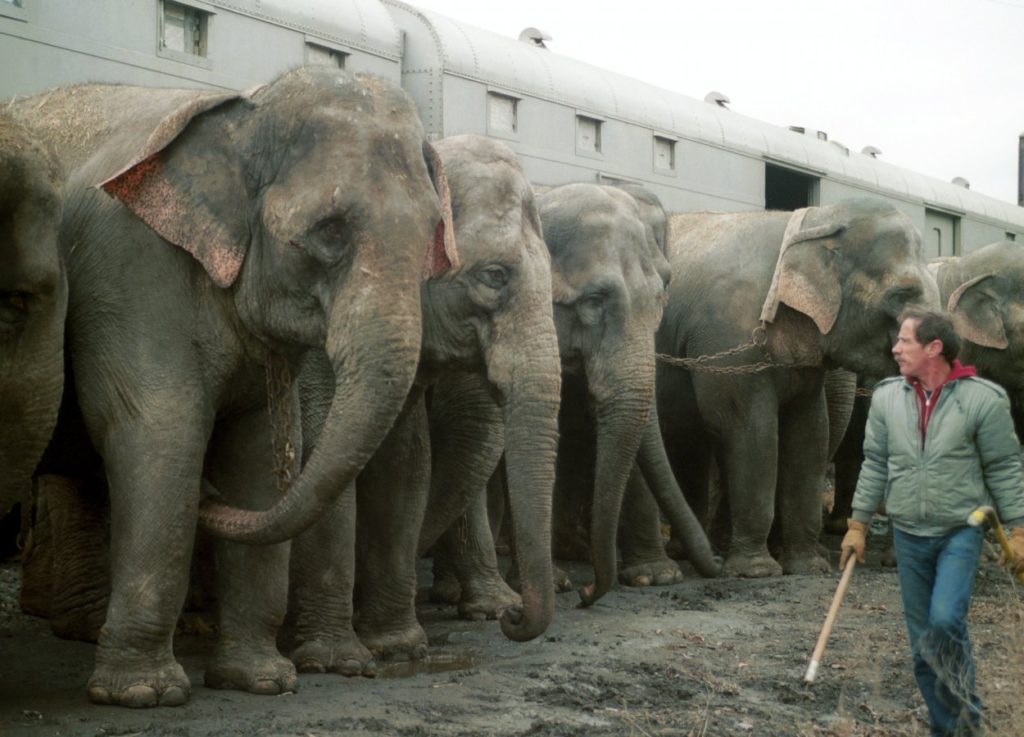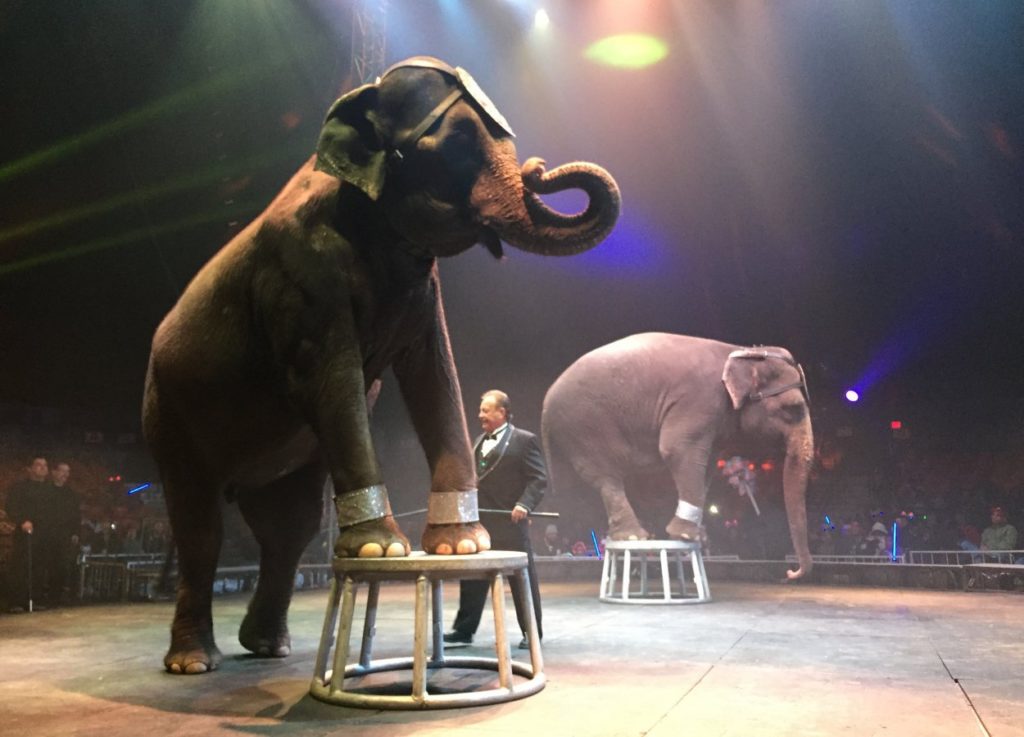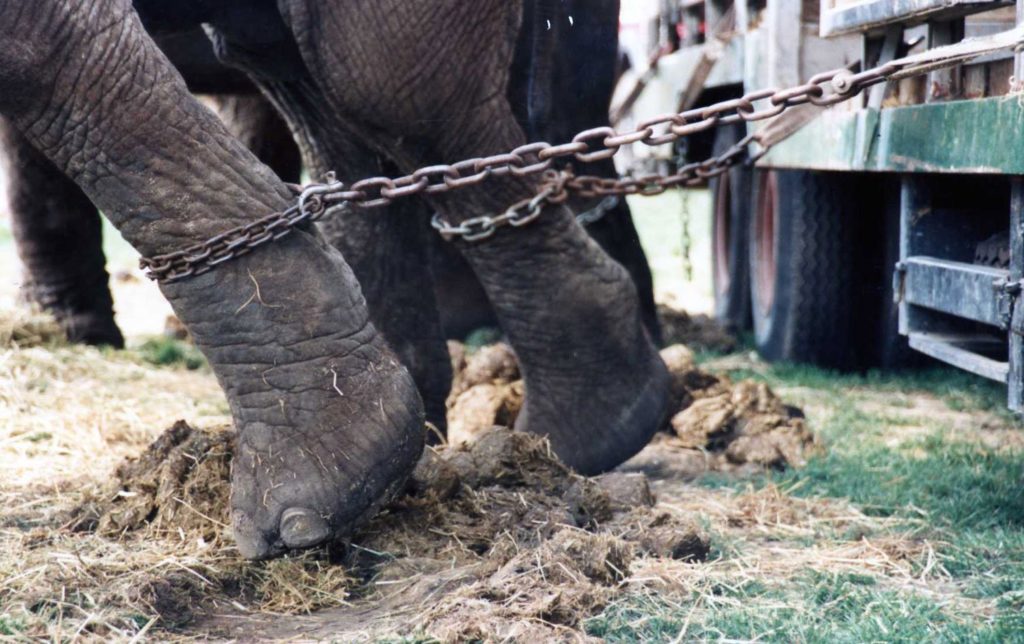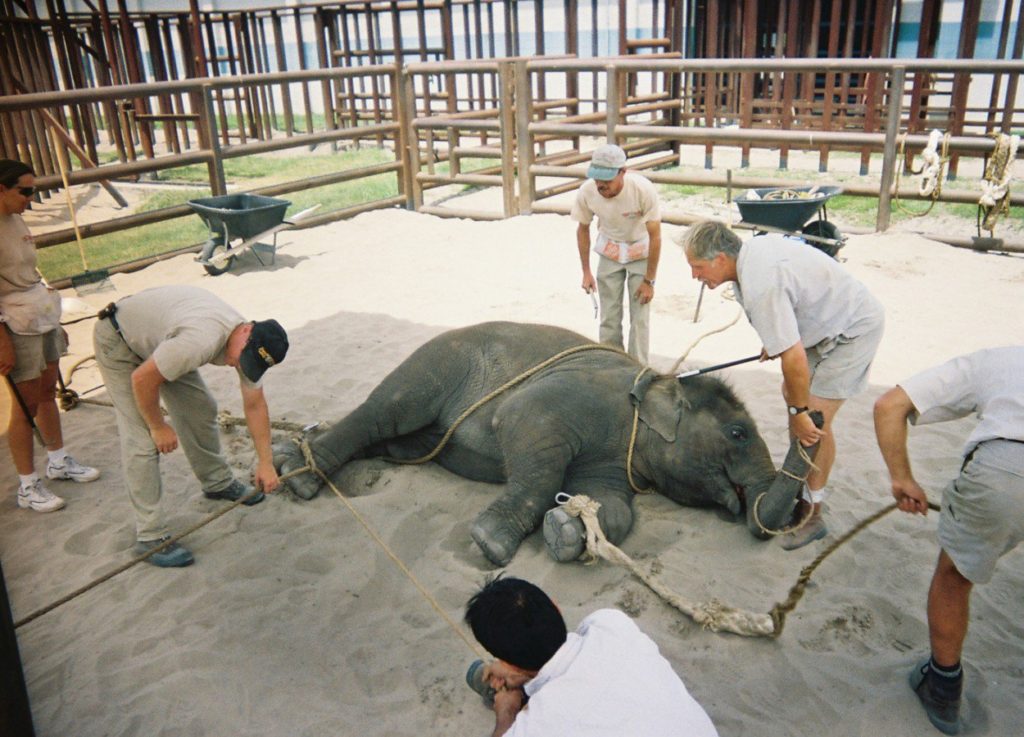Baby Elephants, Bound and Broken: How Circuses Train Elephants (with pictures)
ANIMAL RIGHTS - VEGETARIANISM, 22 May 2017
PETA-People for the Ethical Treatment of Animals – TRANSCEND Media Service
Join an elephant trainer as he takes us through the process of how he, alongside many other trainers, forced elephants to learn how to perform unnatural tricks for “entertainment.”
“These are classic pictures of professional elephant-training,” according to one of the trainers in the photographs.
Breaking the Mother-Calf Bond
Even though female elephants stay with their mothers for life and males until their early teens, the first step in training elephants to perform tricks is to break the bond between babies and their mothers. When they are 18 to 24 months old, calves are roped by all four legs and tied by the neck to an “anchor elephant” who leads them away from their mothers. The frantic moms are restrained by having all four legs chained to the wall while the babies try to run away and fight having the ropes put on.
Breaking the Elephants’ Spirit
Next, the baby elephants are mentally and physically broken. All four legs are tied to a bar so that all they can do for up to 23 hours a day for up to six months is stand on a concrete floor. This is emotionally and physically devastating to young Asian elephants, who want only to learn how to be an elephant alongside their family. In their natural habitats, they would spend nearly all their waking hours walking, grazing, dust-bathing, swimming, and socializing.
Crying to Be Free
The ropes used to restrain the baby elephants often are tied so tightly around their legs that the animals can incur deep and painful lesions. Their cries, which can be heard from outside the barn, intensify when they see their mothers walk into the barn.
No Will to Fight
After up to six long months of fighting their restraints, these once curious and energetic elephants are broken. When they stop trying to run away from their trainers during daily walks, circus training begins in earnest.
The Baby Elephants Are Bound by Ropes and Forced to Learn How to Perform a “Down Salute”
And to Lie Down on Command
And to Sit on Tubs
Force and the “tools of the trade” are used to make them comply. To make baby elephants perform a headstand, trainers stab bullhooks—heavy, steel-tipped weapons that resemble fireplace pokers—into their hind feet and, to hold them down, the back of their heads.
For the rest of their lives, the elephants will be fearful of bullhooks. The mere sight of one will invoke terror, as the sharp metal tip of these weapons can easily wound elephants’ thin skin.
Trainers also use electric shock prods on elephants.
This barbaric and violent training process goes on in secret, out of the public’s view and completely unmonitored by any federal, state, or local law-enforcement agency.
And when inspectors from the U.S. Department of Agriculture do show up to investigate claims of abuse or neglect, trainers may hide rope burns by putting mud on the elephants’ legs.
After a year or more of psychological and physical torment, the baby elephants are ready for the road.
Time to Hit The Road!
They’ll Be Transported from Place to Place for Weeks on End
Regardless of How Exhausted the Elephants Are, the Show Goes On
They Will Spend the Majority of Their Lives in Chains
httpv://www.youtube.com/watch?v=ECspj0daAlE
_____________________________________________
DISCLAIMER: The statements, views and opinions expressed in pieces republished here are solely those of the authors and do not necessarily represent those of TMS. In accordance with title 17 U.S.C. section 107, this material is distributed without profit to those who have expressed a prior interest in receiving the included information for research and educational purposes. TMS has no affiliation whatsoever with the originator of this article nor is TMS endorsed or sponsored by the originator. “GO TO ORIGINAL” links are provided as a convenience to our readers and allow for verification of authenticity. However, as originating pages are often updated by their originating host sites, the versions posted may not match the versions our readers view when clicking the “GO TO ORIGINAL” links. This site contains copyrighted material the use of which has not always been specifically authorized by the copyright owner. We are making such material available in our efforts to advance understanding of environmental, political, human rights, economic, democracy, scientific, and social justice issues, etc. We believe this constitutes a ‘fair use’ of any such copyrighted material as provided for in section 107 of the US Copyright Law. In accordance with Title 17 U.S.C. Section 107, the material on this site is distributed without profit to those who have expressed a prior interest in receiving the included information for research and educational purposes. For more information go to: http://www.law.cornell.edu/uscode/17/107.shtml. If you wish to use copyrighted material from this site for purposes of your own that go beyond ‘fair use’, you must obtain permission from the copyright owner.
Read more
Click here to go to the current weekly digest or pick another article:
ANIMAL RIGHTS - VEGETARIANISM:
